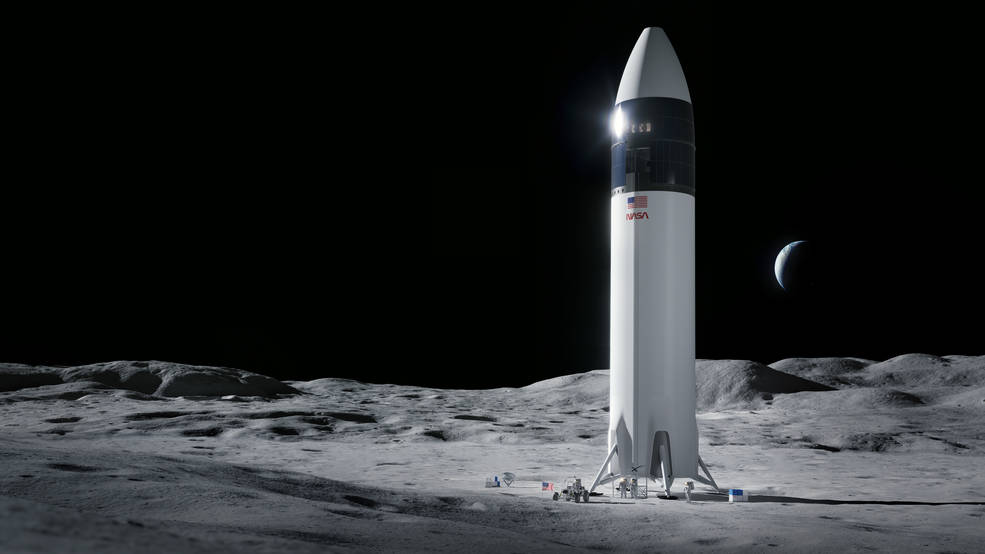
NASA’s Artemis program is slated to land astronauts on the Moon by the end of 2025, but SpaceX’s hurdles with its lunar lander technology could potentially push the much-anticipated mission into 2026, warns a Senior NASA manager.
With a little over two years left under the current schedule until the Artemis 3 mission, SpaceX has only conducted one integrated test flight of its Super Heavy/Starship rocket, which ended in a destructive outcome a few minutes into the flight, well before even reaching space.
As the company prepares for a second test flight, the uncertainty around its timeline remains.
In an Artemis update on August 8, NASA’s associate administrator for Exploration Systems Development, Jim Free, emphasized the need for SpaceX to gain flight experience before a conclusive assessment can be made about meeting the 2025 target.
“They have a significant number of launches to go, and that, of course, gives me concern about the December of 2025 date,” Free said.
The Artemis program holds immense significance for NASA’s ambitions beyond the Moon. It not only aims to establish a foothold for future Mars missions but also capitalizes on lunar resources like ice deposits for air, water, and rocket propellants.
Artemis has already witnessed some progress with its long-delayed inaugural mission in late 2022 in which an unpiloted Orion capsule circled the Moon after the maiden flight of the Space Launch System heavy-lift rocket.

Artemis 2, targeted for late next year, will involve sending three NASA astronauts and a Canadian astronaut on a free-return flight around the Moon.
However, Artemis 3, tentatively set for a December 2025 launch, is the ultimate goal. It is expected to involve docking an Orion capsule with SpaceX’s Human Landing System, a Lunar Starship variant launched atop the company’s Super Heavy booster.
Astronauts would then journey to the Moon’s surface using Lunar Starship and conduct exploration before reuniting with Orion for the return to Earth.
For SpaceX, achieving this intricate choreography involves multiple steps, including an uncrewed lunar landing test flight and demonstrating the refilling of Starship’s propellant after reaching low Earth orbit.
Join our Discord Server: Join the community with forums and chatrooms about space!
The company’s founder, Elon Musk, remains determined to overcome challenges faced during the first orbital attempt. While SpaceX aims to meet its contractual obligations, Free acknowledges the challenge.
“That’s a lot of launches to get those missions done,” Free said.
With the ambitious Super Heavy/Starship design generating 16 million pounds of thrust, SpaceX’s journey is not without setbacks. The rocket’s maiden launch in April encountered engine issues, leading to a self-destruct sequence.
Recently, on August 6, SpaceX conducted a static fire test of its latest Super Heavy Booster which also ran into engine issues. However, it successfully tested SpaceX’s new water deluge system to soften the blow of the engines on the pad below.
As SpaceX works toward resolving these challenges, NASA Administrator Bill Nelson underscored the significance of Artemis.
“Returning astronauts to the Moon to learn, live and work is a bold endeavor,” Nelson said.
The program’s success is vital, not just for lunar exploration but as a stepping stone for Mars missions.
In April 2021, SpaceX was awarded $2.9 billion to develop a lander for the Artemis 3 mission. In November 2022, NASA awarded an additional $1.15 billion to fly a second “sustainable” version of the vehicle for Artemis 4.
This investment is widely accepted as NASA’s commitment to rekindling lunar exploration and ultimately setting humanity on a trajectory toward the Red Planet.
FTC: We use income earning auto affiliate links. More.




Comments